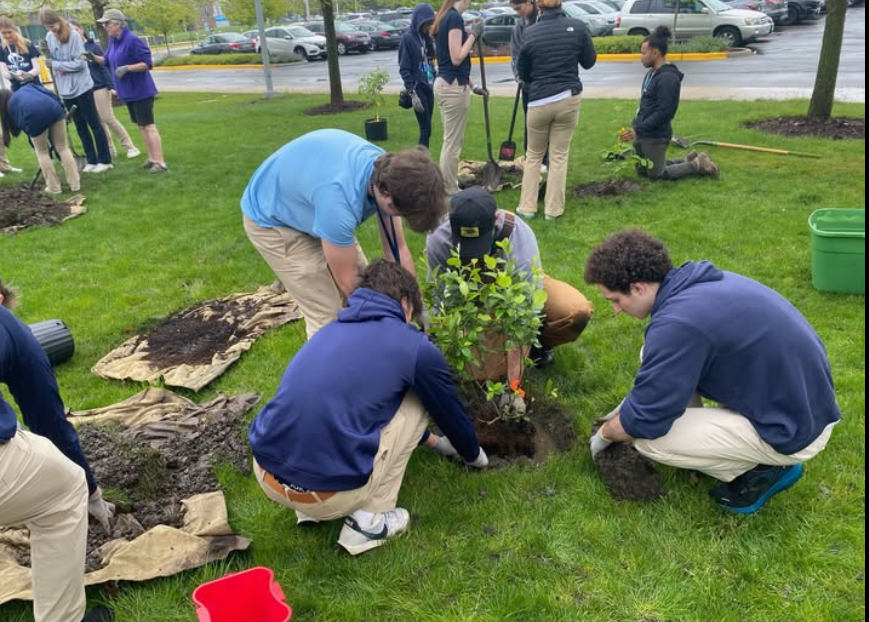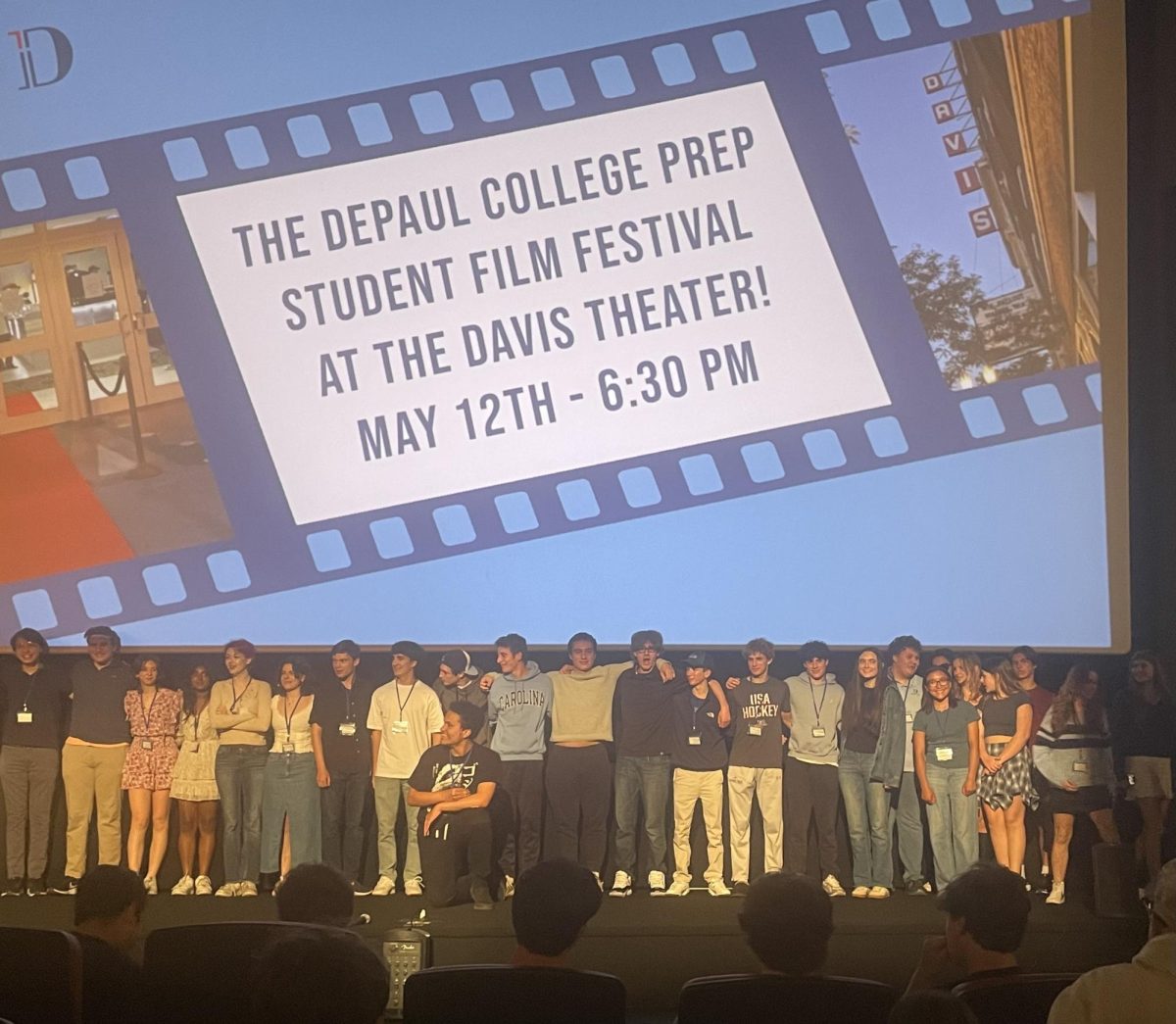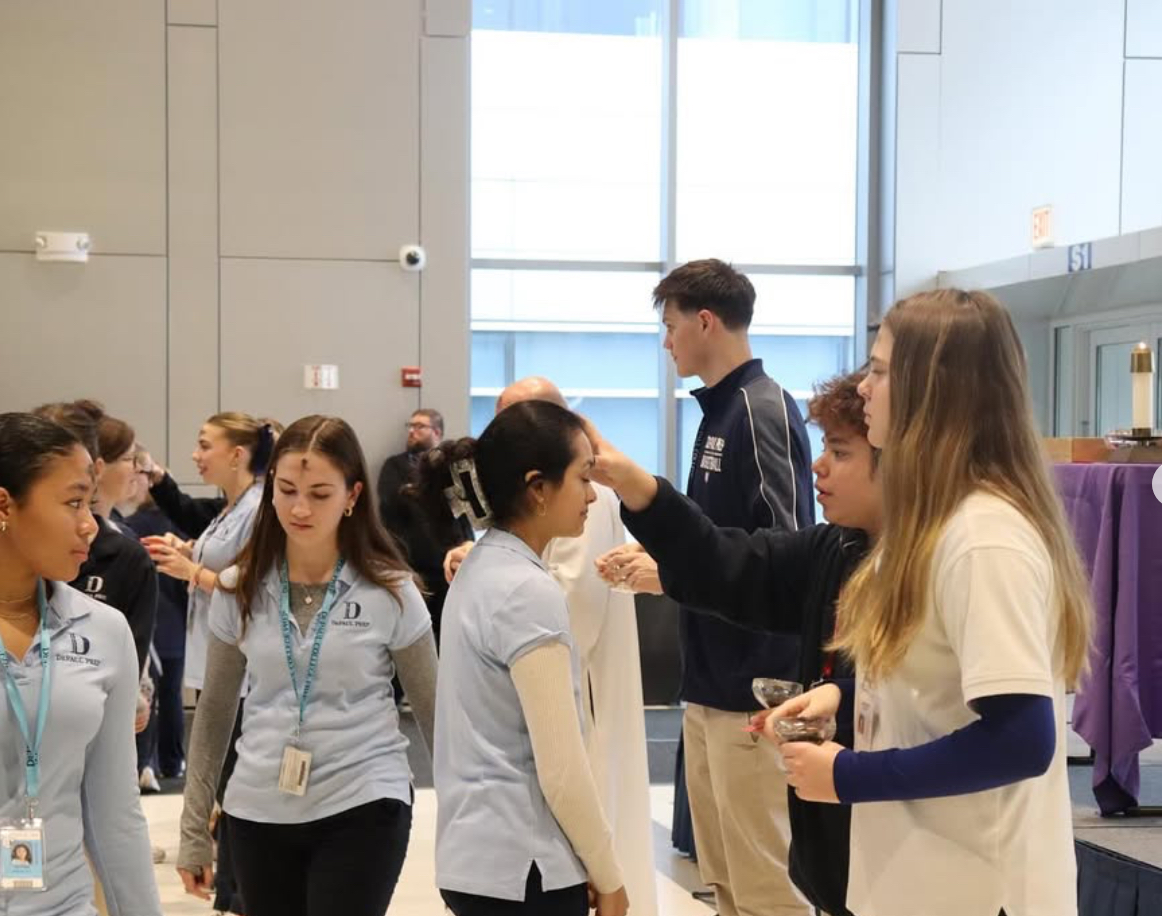Quest Food Management Systems partners with DePaul Prep‘s dining hall to provide a variety of breakfast and lunch options for students and staff. As part of a new effort to provide nutritious and environment-conscious meals, recent additions to the DePaul Prep lunch menu have included food grown right outside the kitchen, in the greenhouse located on the south lawn.
The incorporation of “tomatoes, microgreens, and different herbs” into the Quest menu is an initiative that’s taken almost 3 years of effort to put in place, said Garden Manager David Toledo. It was inspired by the concept of encouraging students to understand where their food comes from.
Most of the food sold in stores and served in restaurants travels hundreds or thousands of miles from farm to plate, but food from the garden or greenhouse travels 487.5 feet from garden bed to kitchen, said Toledo. When compared with the average of 1,500 miles traveled by commercially grown food, food from the garden can “retain more nutrients and taste better when it arrives on your plate,” he said.
Toledo, Culinary Arts teacher Melissa Flynn, and Greenhouse Manager Colleen McVeigh partnered with Quest Executive Chef Romel Alvar, as well as Food Service Director Parker Kokowicz to incorporate the produce grown in both the indoor and outdoor greenhouses, as well as the garden, into the lunch menu at DePaul Prep.
While some of the menu additions are the product of requests by Alvar and Kokowicz, the majority of the produce grown is by student request, said Toledo.
Not only are produce selections influenced by students, the growing process is as well. In addition to students enrolled in the Sustainable Urban Food Systems and Culinary Arts class, who regularly participate in garden and greenhouse upkeep, any DePaul Prep student looking to get involved with the growing process can volunteer in the greenhouse with McVeigh, she said.
Helping in the greenhouse “looks different every day,” said McVeigh. A lot of work goes into getting food ready for the lunchroom. This includes harvesting seeds, working on recipes, and learning from McVeigh, said junior Alma Suarez, who has participated several times.
Getting food from the greenhouse and garden into the daily lunch menus is part of a larger effort to educate students on where their food comes from. Seniors taking the Sustainable Urban Food Systems and Culinary Arts elective, taught jointly by Toledo, McVeigh, and Flynn, have the opportunity to choose which plants are grown both in the greenhouse and indoors in the indoor greenhouse, connected to the culinary arts classroom. This year’s classes have selected a wide variety, ranging from zucchini to bok choy to a wide variety of herbs, said McVeigh.
The cold Chicago winters won’t stop fresh produce from making its way to the lunchroom. While larger produce varieties are grown outdoors or in the greenhouse, classes also learned how to grow microgreens in an indoor environment, said McVeigh. “It’s messy, but it’s worth it,” said Suarez.
Toledo and McVeigh both hope to expand the amount of fresh, local options available for students, they said. Since this is the first year being “a little more intensive and intentional” with the effort, Toledo said he would love to see the project expand in the future.
“We’re hoping this will really help students understand the nutritional value that comes from locally sourced food,” he said.







